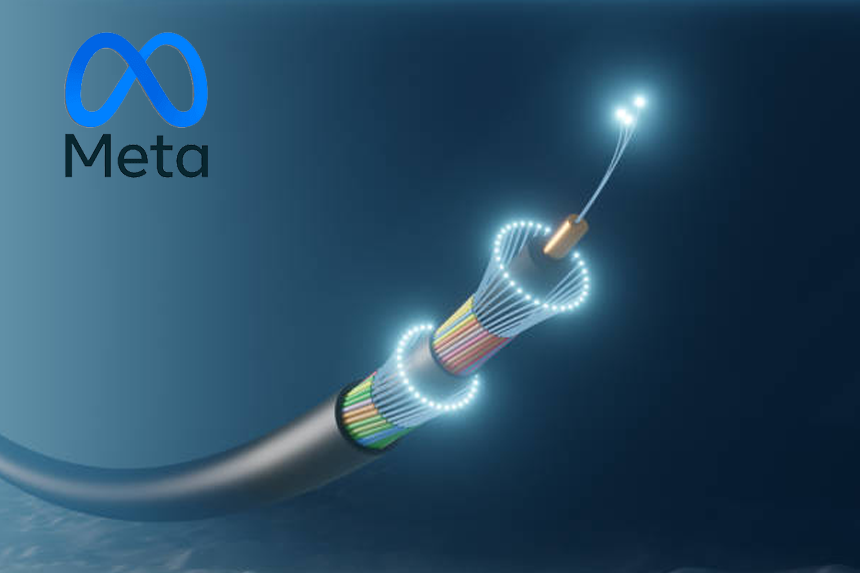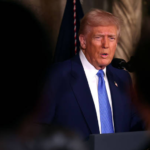Plans by Meta to create a 50,000 km (31,000-mile subsea cable all around the globe have been revealed. Owning Facebook, Instagram, and WhatsApp, the tech behemoth said that Project Waterworth will be the longest underwater cable system built ever. The United States, India, South Africa, Brazil, and other areas will be connected by the undersea cable, therefore greatly increasing world digital connection.
Meta has been trying to venture into artificial intelligence (AI) and digital infrastructure, therefore transcending social media. The firm claims that this new subsea cable project would support AI-driven technology and offer “industry-leading connectivity” over five major continents, hence enabling With remote work, digital economies, and cloud computing driving the need for improved worldwide connection, the demand for faster and more dependable internet infrastructure has never been greater.
Meta said in a blog post introducing the project, “this will enable greater economic cooperation, facilitate digital inclusion, and open opportunities for technological development in these regions.”
How will this subsea cable raise world connectivity?
Using a 24 fiber-pair system, Project Waterworth will be the longest undersea cable to date and Meta says will offer a far greater data transfer capability. Modern digital infrastructure depends on subsea cables since they allow quick and effective data flows all around. Subsea cables are thought to account for over 95% of the global internet traffic.
TeleGeography, a telecoms market research company, estimates that over 600 publicly known subsea cable systems exist worldwide at present. Meta has already been involved in comparable projects, notably the 2Africa cable, which covers 45,000km and connects three continents. The 2Africa program is endorsed by Meta along with major mobile network companies such as Orange, Vodafone, and China Mobile.
Expanding subsea cable networks, especially in underdeveloped areas, will help to improve world internet performance, experts say. Slow internet connections and restricted access to digital services still plague many areas of the globe. Through infrastructure projects like Project Waterworth, Meta hopes to close the digital divide and provide fast internet to more people.
Other behemoths of technology have also been funding comparable infrastructure. Google revealed intentions to build the first underwater cable linking Australia and Africa in 2024. By means of two new Pacific Ocean underwater cables, the firm also committed $1 billion to enhance communication between Japan and other areas.
Why are large technology companies driving this infrastructure change?
Large national telecom companies historically funded and installed undersea cables because their high investment costs. However, over the last decade, big technology corporations have taken the lead in sponsoring and developing these networks.
“This reflects the growing size and position of big tech firms to be able to fund such infrastructure independently,” said an analyst in digital markets. Policymakers worried about concentration in digital marketplaces could find this important.
Commenting on Meta’s aspirations, IT industry analyst Paolo Pescatore said, “Meta has shown a strong desire to own more of the connectivity slice.” This is another proof as it tightly integrates hardware, software, platform, and its expanding aspirations in connectivity to leapfrog rivals in giving users a unique experience.
Controlling subsea cable networks, according to experts, also gives tech firms a competitive edge since it guarantees quicker, more consistent service for their products. Having direct control over internet infrastructure could save money and improve performance since more people rely on cloud computing and artificial intelligence solutions.
What Are the Security Risks of Undersea Cables?
Subsea cables’ growing significance also begs questions about their susceptibility to deliberate damage or attack. Recent events involving severed cables have underlined the geopolitical concerns related to the worldwide communications system.
In response, NATO began an operation in January to increase surveillance of ships in the Baltic Sea, following damage to key undersea cables last year. Citing issues over “Russian and Chinese capabilities to hold undersea infrastructure at risk—particularly during periods of increased tension or conflict,” a UK parliamentary committee has also issued a call for evidence on the country’s preparedness for possible disruptions. The fragility of subsea cables has been a growing concern for national security agencies worldwide. Natural disasters or ship anchors might trigger accidental breakage that might seriously affect internet access over whole areas. More worrisome still is the possibility of deliberate sabotage by either state or non-governmental entities. Governments have been pushed to enhance surveillance and protection policies by the possibility that underwater cables might become targets in next wars.
Meta said that Project Waterworth will be placed at depths of up to 7,000 meters and would use “enhanced burial techniques” in high-risk fault zones, such shallow coastal seas, to reduce damage from ship anchors and other hazards, therefore addressing these security concerns. Real-time monitoring and protective casings are two more security steps that might help to shield the infrastructure from possible hazards.
How will the navigation of geopolitical challenges by this submarine cable project?
Project Waterworth seems to specifically avoid known undersea cable paths, especially Europe and China, according to experts. Rather, it emphasizes tying the US to important Southern Hemisphere markets.
A digital infrastructure analyst noted, “This path avoids major geopolitical hotspots such the Suez Canal and the South China Sea.” “The project could be seen as bolstering US economic and infrastructure influence abroad by strengthening ties between the US and rising economies in the Global South.”
By avoiding politically sensitive areas, Meta might also be trying to avoid possible geopolitical obstacles that could complicate or postpone the project or regulatory issues. Companies are being obliged to carefully negotiate international politics to guarantee their investments remain safe and operational as tensions between world superpowers grow.
Still another important factor is how the project would affect local businesses. Many developing nations depend on alliances with foreign businesses to upgrade their digital systems. By offering improved internet connectivity, Meta might enable companies to grow and people to more completely engage in the digital economy, therefore helping to drive economic development with Project Waterworth.
With large IT businesses now at the vanguard of global connection efforts, the future of the internet could increasingly be dictated by private enterprises rather than national governments. The world will be observing as Meta advances its subsea cable project to see how it affects digital inclusion, economic development, and world power dynamics.
Ultimately, while Project Waterworth presents a significant opportunity to enhance global internet connectivity, it also raises important questions about digital sovereignty, infrastructure security, and the growing influence of big tech in shaping the world’s digital future. One thing is certain: subsea cables are becoming among the most valuable assets in the modern digital economy, whether this project will live up to its ambitious promises or not.








